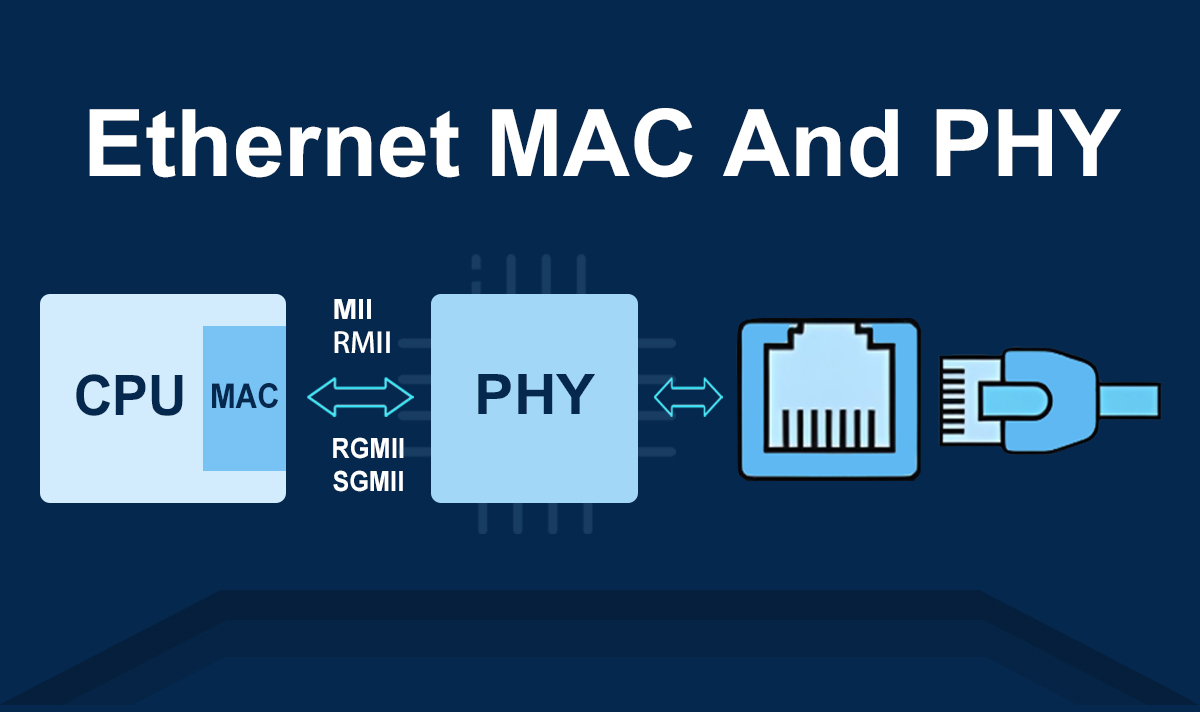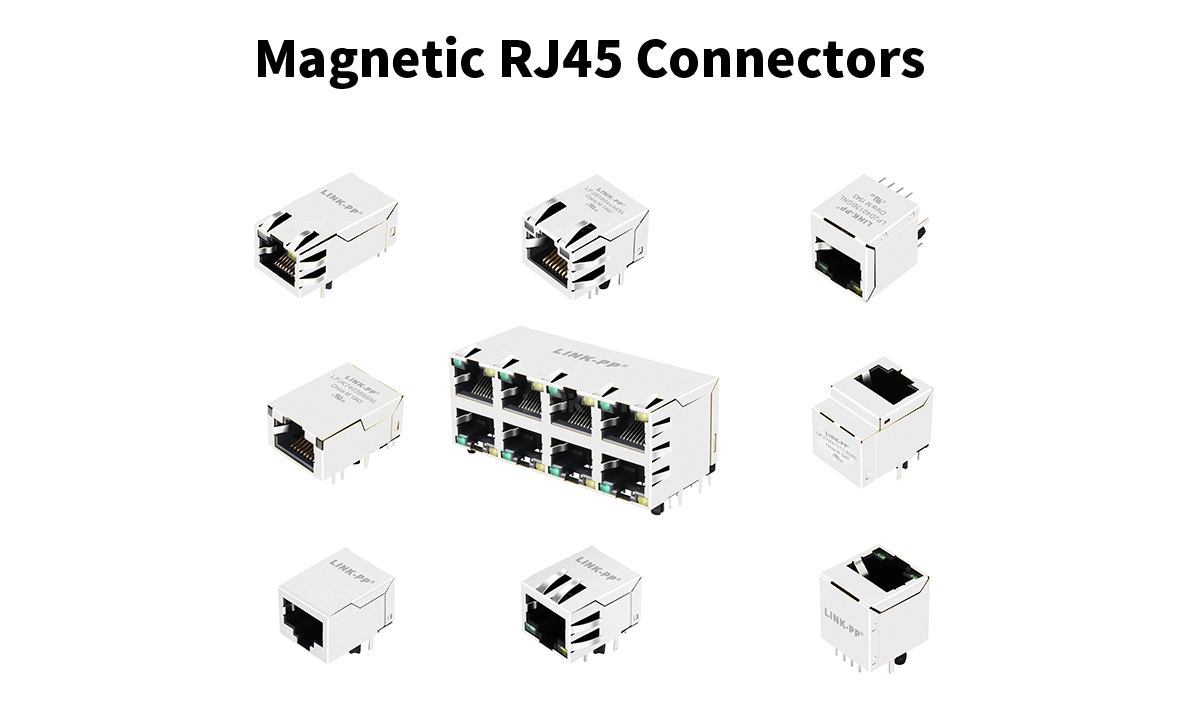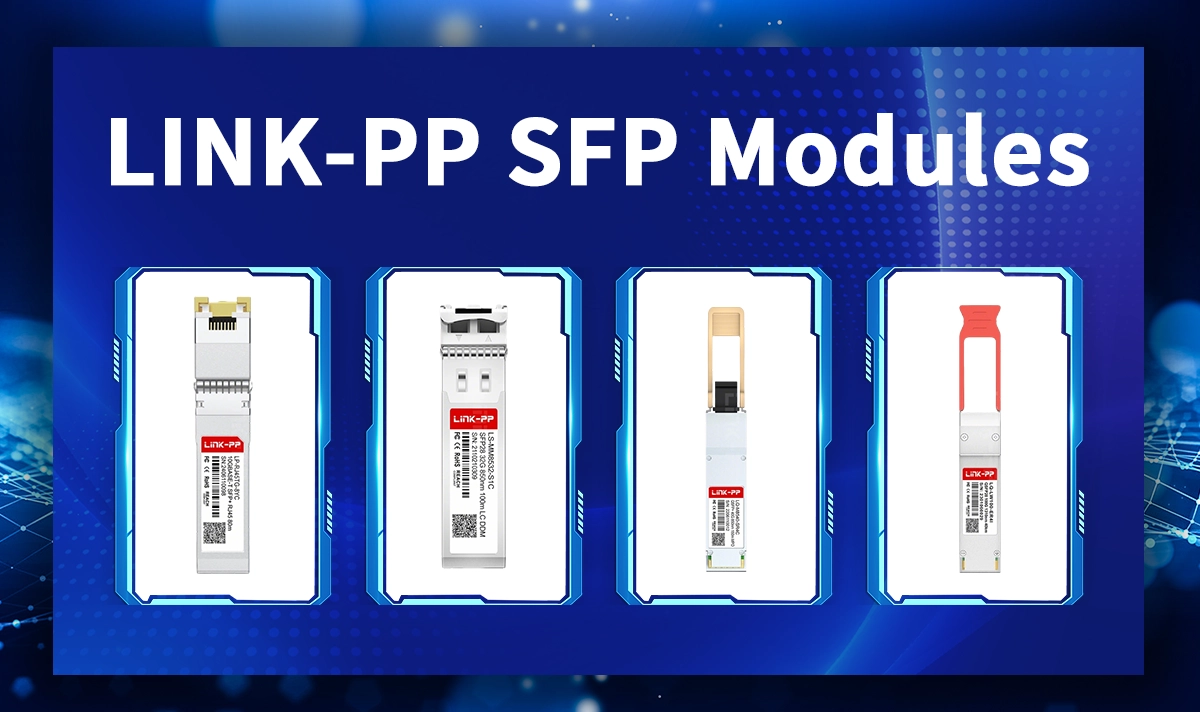Ethernet MAC and PHY Explained
As Ethernet technology evolves to support faster data rates and more complex applications—from cloud computing to industrial IoT—the foundational roles of MAC (Media Access Control) and PHY (Physical Layer Transceiver) remain essential to reliable data transmission. These two components operate at different layers of the OSI model but work together to complete every Ethernet communication.
In this article, we’ll explore the architecture, functions, and interaction between Ethernet MAC and PHY—and how LINK-PP contributes to this ecosystem with high-performance components such as SFP optical transceivers and integrated magnetic RJ45 connectors.

What Is the Ethernet MAC?
The MAC (Media Access Control) is part of the data link layer (Layer 2) in the OSI model. It is responsible for:
Frame encapsulation and decapsulation
Media access arbitration (half/full duplex)
Error detection via CRC
Addressing using MAC addresses
Where Is MAC Found?
MAC functionality is often integrated into:
Network Interface Cards (NICs)
System-on-Chips (SoCs)
Ethernet switches
Embedded processors (ARM, RISC-V)
The MAC interfaces with the PHY through a standard like RGMII, SGMII, or XGMII, depending on data rate and application.
What Is the Ethernet PHY?
The PHY (Physical Layer Device) operates at the physical layer (Layer 1) of the OSI model and is responsible for:
Line encoding and decoding (e.g., 8b/10b, PAM-4)
Modulation and demodulation
Clock and data recovery
Signal conditioning
Auto-negotiation and link training
The PHY converts digital signals from the MAC into analog electrical or optical signals for transmission over copper (e.g., CAT6 cables via RJ45) or fiber (e.g., SFP modules).
How MAC and PHY Work Together
Here’s a simplified architecture:
[CPU] ↓ [MAC Controller] – (RGMII/SGMII) – [PHY Chip] – [RJ45 or SFP Module] ↓ [Ethernet Cable]
The MAC manages digital packet formatting, while the PHY handles the signal transmission. Together, they enable Ethernet communication across LANs, WANs, and data centers.
LINK-PP: Supporting MAC/PHY Integration
At LINK-PP, we design and manufacture a wide range of Ethernet interconnect components that support MAC/PHY architectures, including:
1. RJ45 Integrated Magnetics

LINK-PP’s RJ45 connectors with integrated magnetics help simplify PCB design and improve EMI suppression. These modules directly interface with the PHY and are ideal for:
Gigabit Ethernet switches
Embedded IoT boards
Power-over-Ethernet (PoE) systems
➡ Explore: LINK-PP RJ45 Connectors
2. SFP Optical Transceiver Modules

When the PHY connects to fiber optics, it typically interfaces through SFP or SFP+ modules. LINK-PP offers a wide portfolio of optical transceivers that support:
1G/10G/25G/100G Ethernet
Short-range (SR), long-range (LR), and BiDi variants
Compatibility with Cisco, Juniper, Intel, etc.
➡ Explore: LINK-PP SFP Modules
MAC vs PHY: Summary Table
Feature | MAC | PHY |
|---|---|---|
OSI Layer | Layer 2 – Data Link | Layer 1 – Physical |
Role | Frame management, CRC | Signal conversion, link control |
Interfaces | CPU, Memory, PHY | MAC, RJ45, SFP |
Signal Type | Digital | Analog (electrical/optical) |
Final Thoughts
Ethernet MAC and PHY are core components of all modern networking systems. Whether you’re designing embedded devices or enterprise-grade switches, understanding how these layers interact helps ensure stable, standards-compliant communication.
LINK-PP empowers engineers and integrators with premium components that simplify MAC/PHY integration—whether it’s through an RJ45 magnetic module for copper Ethernet or an SFP+ transceiver for high-speed fiber links.




